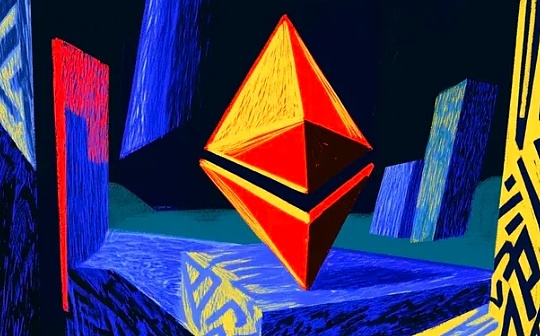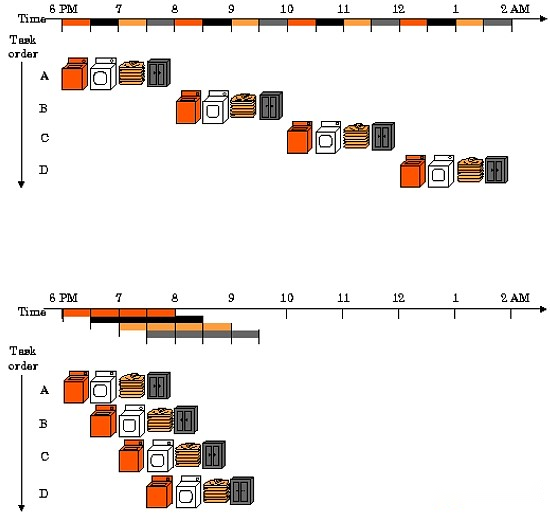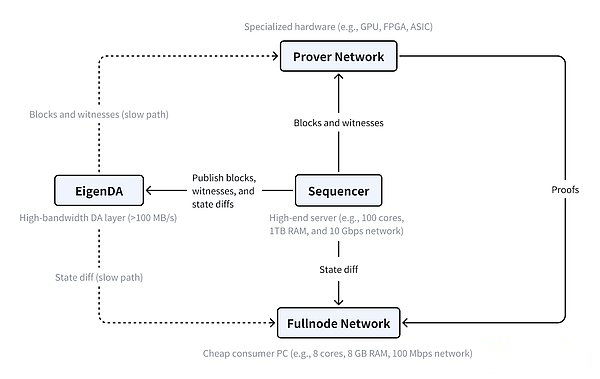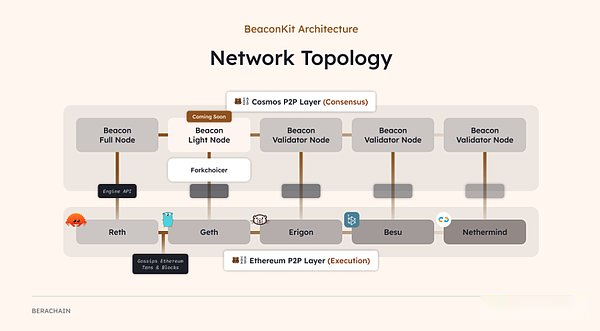
Author: Jun, Bankless; compiled by Deng Tong, Bitchain Vision
Ethereum virtual machines (EVMs) have quietly become the backbone of blockchain development.This is not just technology, but an ecosystem of developers, tools and applications that surround technology development.
Today, there are many teams that are rethinking Ethereum’s design choices to enhance EVM to create blockchains that can handle billions of users and thousands of transactions per second.They take advantage of EVM and push boundaries with new architectures and capabilities.
This article highlights projects that accelerate EVM to achieve massive scalability and pave the way for future cryptocurrency adoption.Today, we will dive into Monad, MegaETH, Berachain and Sei.
Monad
First, let’s talk about Monad.
Monad is an L1 blockchain that has raised $225 million to enhance EVM by introducing optimistic parallel execution, with the goal of 10,000 transactions per second.
Parallel execution allows independent transactions to run simultaneously, thereby significantly speeding up processing.Think of it as using multiple washing machines at the same time: without waiting for each washing machine to finish, everything can be done faster while still appearing in order.

In addition to parallel execution, Monad also optimizes the performance of the entire stack:
-
Performance is enhanced through its custom consensus mechanism, MonadBFT, which enables single time slot finalization for faster transactions.
-
Delayed execution is used to separate processing from consensus, improving efficiency and block time.
-
Its parallelized custom database MonadDB allows asynchronous state access, thus speeding up data processing.
It is worth noting that Monad’s architecture is optimized for consumer-grade hardware, making decentralization easier without the need for expensive validator setups.
MegaETH
Next is MegaETH.
MegaETH is Ethereum L2, which takes Ethereum’s security to a new level of performance.Its goal is to build the first real-time blockchain capable of processing 100,000 transactions per second, while relying on Ethereum and EigenDA to ensure security and data availability.
The key to MegaETH throughput is specialization.Most blockchains allow each node to perform the same tasks—verify, reach consensus, and execute transactions.MegaETH changed this through character division.
Nodes are divided into three types: sequencer, prover and full node.The sorter handles transaction sorting and execution.The full node only needs to receive status updates to keep the local copy of the chain up to date.The proofer works in the background and verifies everything with encryption proof.

The main components of MegaETH and their interactions.Source: MegaETH Research
MegaETH also enhances the EVM through memory calculations, where the sequencer saves the entire EVM world state in memory.This increases state access speed by 1,000 times compared to traditional systems.In addition, improvements and other updates to the block construction algorithm allow MegaETH to solve problems such as latency and throughput.
Berachain
Of course, we have to talk about Berachain.
Berachain 是一个高性能、与 EVM 相同的 L1 区块链,这意味着它的执行层镜像了以太坊主网的 EVM 运行时环境。这导致系统支持开发人员已知的所有熟悉的工具和操作,但具有额外的优势。
这些优势的核心是 BeaconKit,这是一个模块化的、以 EVM 为中心的共识客户端框架,Berachain 就是在该框架上构建的。 BeaconKit 的主要好处是能够将 CometBFT 共识算法的功能与 EVM 执行环境集成。这有效地模块化了堆栈,分离共识层和执行层,以增强整体 Berachain 体验。

来源:BeaconKit – 用于构建 EVM 共识客户端的模块化框架
BeaconKit 还可以与任何 EVM 执行客户端配对,允许对 EVM 的每次升级(例如 Dencun)自动应用到 Berachain。This means that Berachain not only retains the same state as EVM, but also speeds it up, expands it, and adds composability without losing compatibility.For example, with BeaconKit, Berachin can achieve single slot finalization, which means that the block is determined immediately, rather than waiting 12-15 minutes, or even more, as on Ethereum.
Sei
Finally, let’s get to know Sei in depth.
Sei combines EVM environments with parallel execution to enable faster and cheaper transactions while leveraging existing tools and the developer community.Its parallel execution allows multiple transactions to be performed simultaneously, which significantly improves throughput and is supplemented by SeiDB for rapid state updates.

What’s novel about Sei is its “Twin Turbo” consensus mechanism that speeds up blocking time to just 400 milliseconds.It achieves this by removing two key technologies that eliminate inefficiency problems common in consensus protocols:
-
Smart Block Propagation – Accelerate block creation, reduce validator waiting time and ultimately reduce latency.
-
Optimistic Block Processing – Verifiers start processing transactions immediately after receiving the block proposal, thereby accelerating finalization.
In addition, Sei also incorporates features such as interoperability between EVM and CosmWasm, opening the door to the Cosmos ecosystem.
However, Sei does sacrifice some decentralization between nodes, as these functions introduce quadratic communication complexity.This means that as more validators join, the number of messages will increase significantly, making network scaling more difficult.
Conclusion
These ambitious projects aim to build on the achievements of Ethereum and scale throughput to thousands of transactions per second.Most are still in their early stages; three of the four have not yet been launched on the mainnet.Only time will prove their success in scaling, driving adoption and enabling efficient application development.
What does this mean for Ethereum?
A silver lining is that some of these high-performance chains are L2 chains, consistent with Ethereum’s summary-centric expansion roadmap.Another positive aspect is that they are all EMV compatible, based on existing tools, while enhancing them in a unique way, thereby facilitating EVM adoption.
This is also a critical moment for the Ethereum community, as many are questioning why not pay more attention to expanding Ethereum itself to L1.Vitalik seems to be in “wartime mode”, constantly publishing blog posts about the potential future of Ethereum.The point is that Ethereum has multiple ways to scale throughput of Ethereum L1, and importantly, all paths are being discussed and explored.









